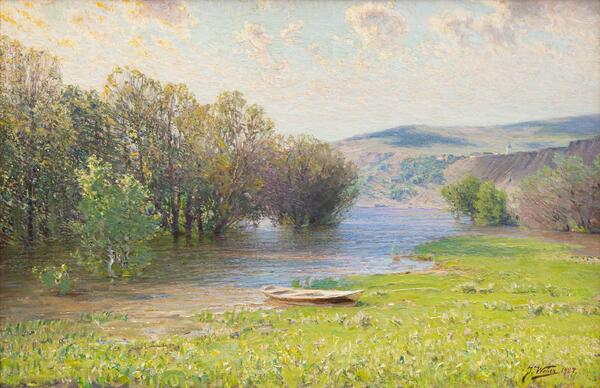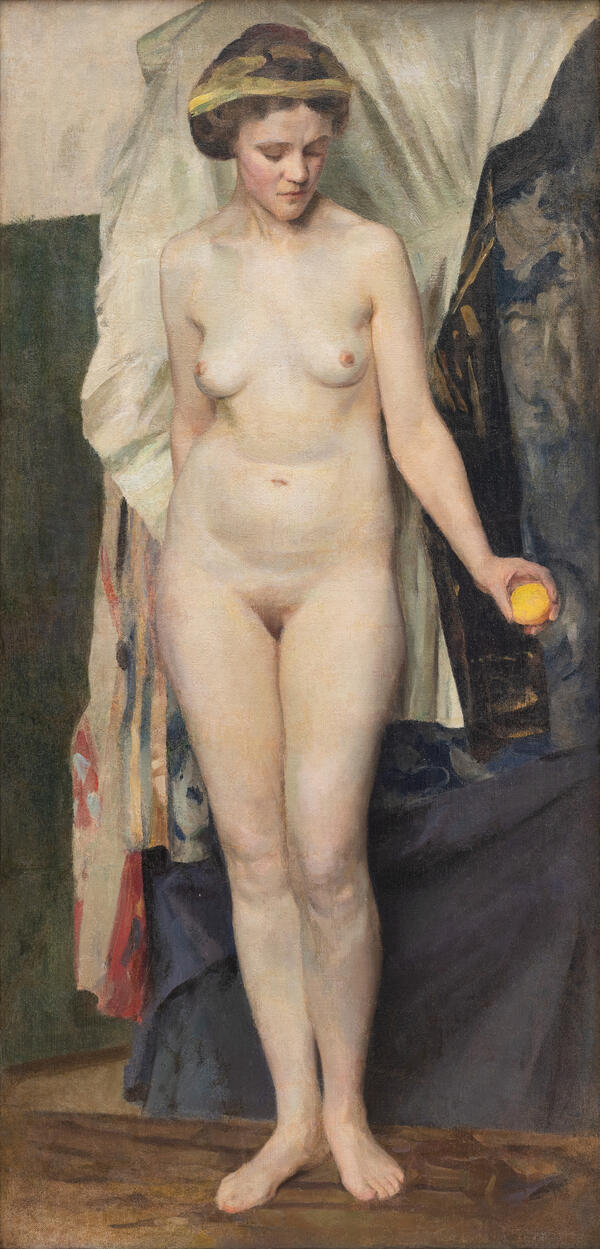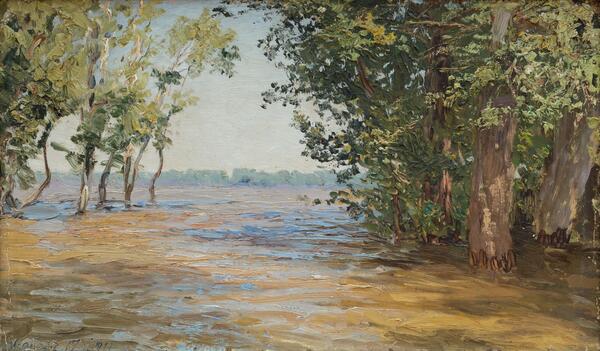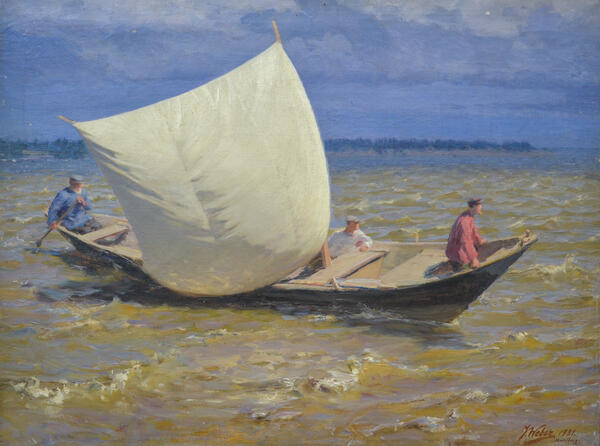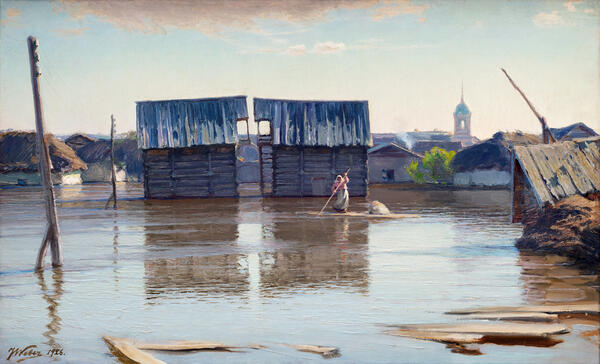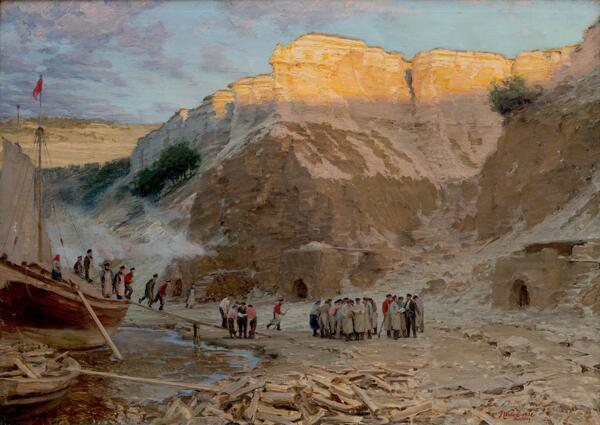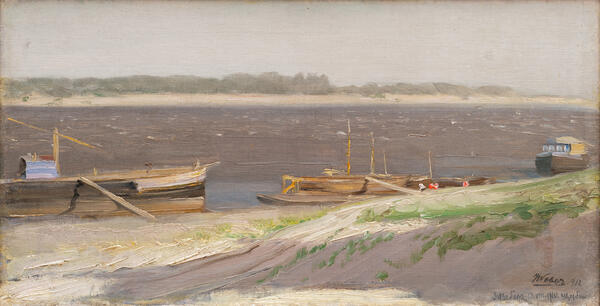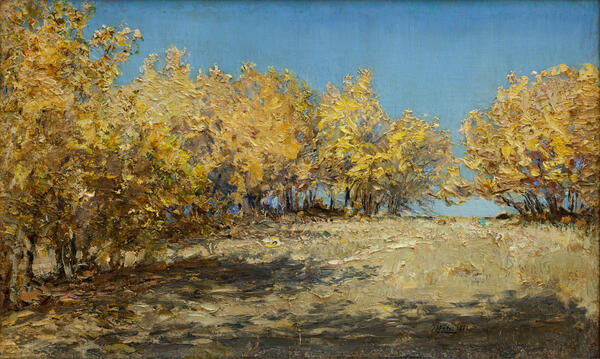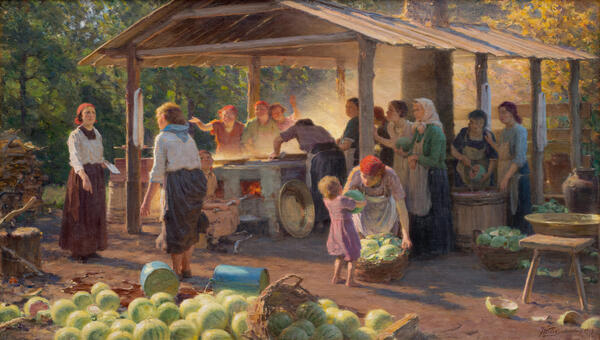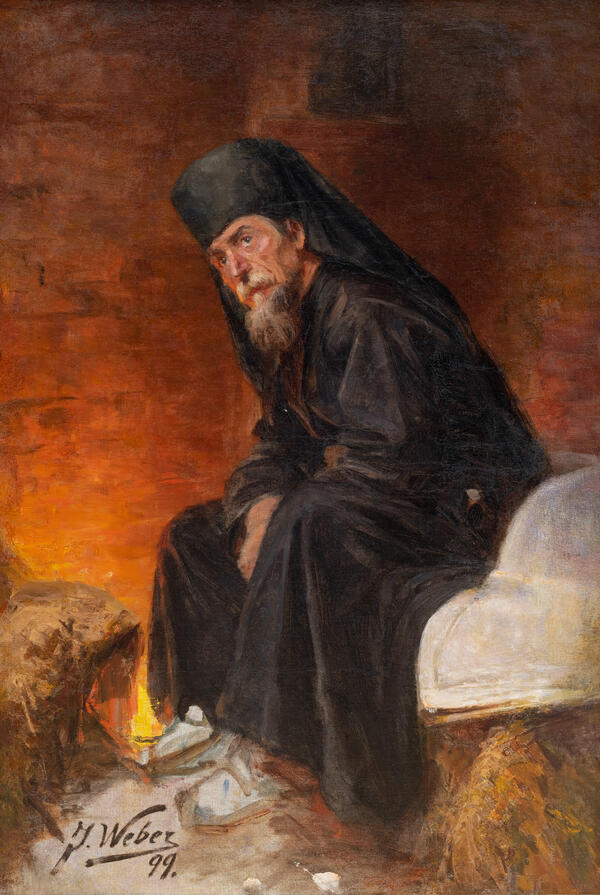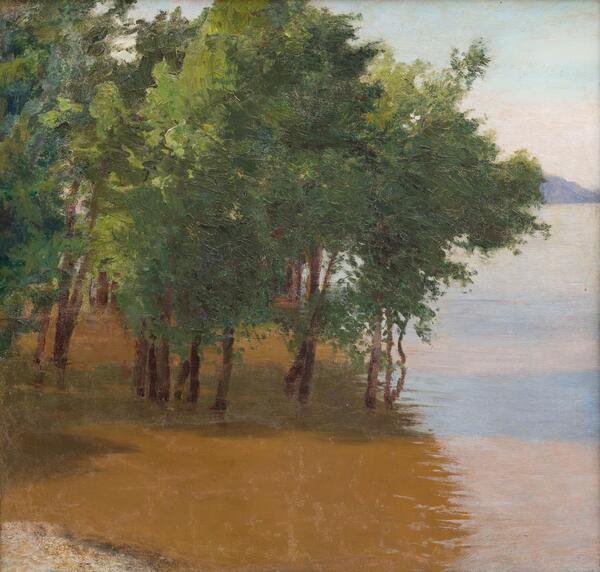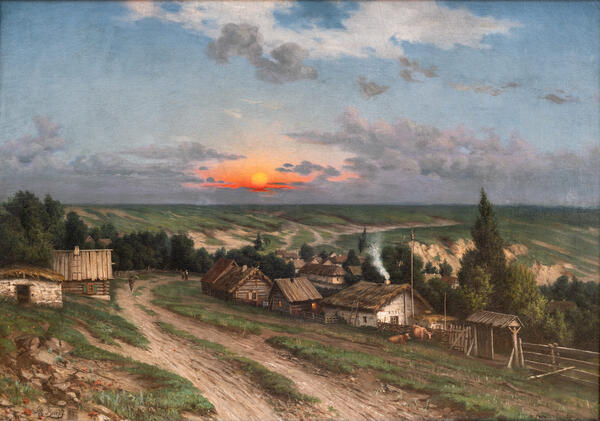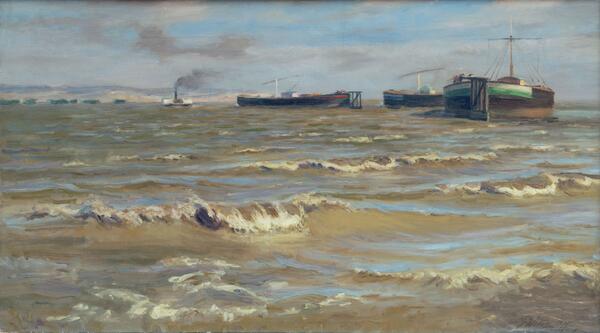The art collection of the Engels Museum of Local Lore includes one of the best early studies by Yakov Yakovlevich Weber, “Wind on the Volga”. The canvas was painted by the artist on August 12, 1908 during his studies at the Imperial Academy of Arts.
The study is painted on a horizontally stretched canvas with broad brush strokes. The canvas depicts water, the steep Volga shore at the high horizon and a narrow strip of blue sky. The “texture” of the Volga water in the foreground is emphasized by “whitecaps” generated by gusts of wind. The study is based on subtle color nuances; the light and air are skillfully conveyed. The Volga vastness and breadth lend an epic quality to the landscape. This is where the distinctive stylistic features of the Volga landscape painter are most clearly expressed. The classes in the workshop of the impressionist Konstantin Korovin were not forgotten. This is where Weber’s fondness for sketching, plein air vision of form, and virtuosity of the moderate impasto brushstrokes came from in his future work.
In his
best landscapes painted between 1901 and 1909, which can hardly be described as
student studies, Weber shows himself as a mature artist, displaying his works
in the Academy’s exhibitions. Weber had a rather small circle of favorite
themes, which he varied. These are diverse states of the Volga with or without
boats, barges, rafts, steamships on the water. Having concentrated his work
throughout his life on the development of a few similar subjects, the artist
achieved excellent results in embodying them. Weber’s high skill makes it right
to refer to the Volga as the Weber’s Volga, like the typical Korovin’s roses
(painted by Konstantin Korovin), Zhukov’s drawing rooms (by Stanislav Zhukov),
Turzhansky’s horses (by Leonard Turzhansky), Stepanov’s hunts (by Alexey
Stepanov), and Malyavin’s peasant women (by Filipp Malyavin). After the events
of 1905, which had a profound impact on wide circles of Russian artistic
intelligentsia, students of the Academy split into innovators and
traditionalists. But the artistic quests of the era, attempts to break out of
the framework of tradition, and the desire for synthesis and monumental forms
were not reflected in Weber’s work.




